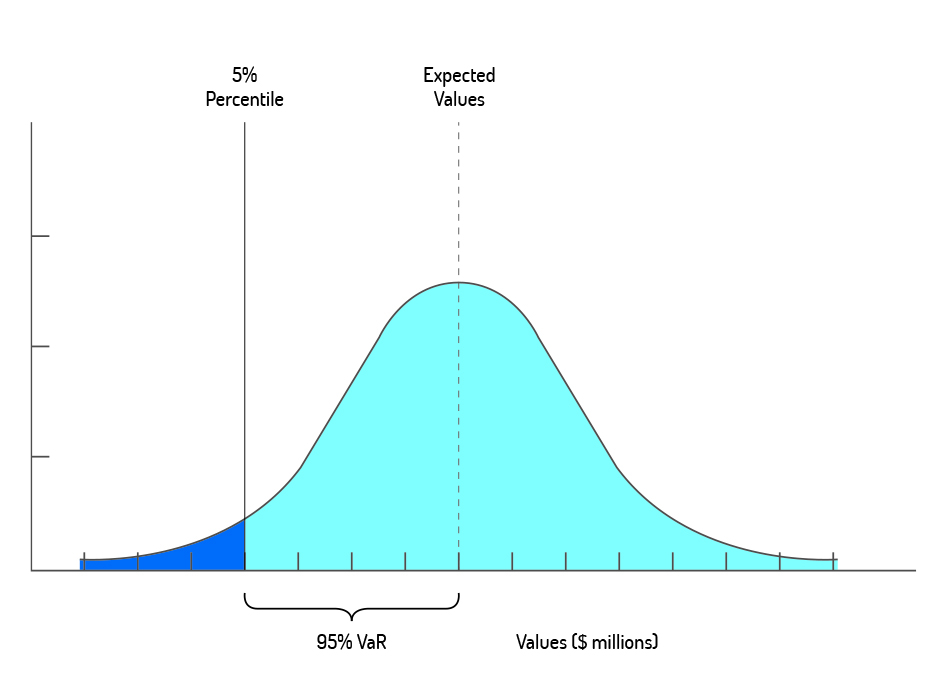Corporates make VaR push in FX

Corporates are increasingly adopting Value at Risk (VaR) approaches to their currency hedging.
Treasurers have long treated their FX exposures to different currencies separately and hedged each one. But many would like to incorporate diversification – the fact that some currency swings tend to offset one another. That would reduce the overall FX risk exposure and hence the need for hedging, which is often a costly exercise.
As multinational companies move towards sophisticated, data-driven approaches to managing risk, they have found a solution in Value-at-risk. Ubiquitous among trading desks, this statistical measure blends the exposure of a portfolio with market volatilities and correlations. The analysis gives a measure of the portfolio’s overall risk that is often expressed as a maximum one-day loss up to a given percentile.

Consider US materials conglomerate Avery Dennison. It started using VaR on its balance sheet FX exposures in early 2019 after starting to investigate the approach back in 2017. Previously it hedged these exposures fully, but the new approach has allowed it to take a more targeted approach to its currency risk management.
As a result, the total reported notional of its FX hedges declined from US$1.44 billion at the end of October 2018 to US$1.1 billion at the end of October 2019, according to SEC filings.
Its in-house creation of an ‘efficient frontier’ model, which two of its banks reviewed as a “sanity check”, enables it “to determine how much of each exposure that otherwise would cause FX results in the P&L we will hedge for the coming month,” notes Ramon Tolk, Senior Director, Treasury.

Identifying the exposures that contribute to the risk is not straightforward. Tolk cites Accounts Receivable, Accounts Payable, inter-company loans and “cash in non-functional currencies” as examples that get included in the risk model.
Meanwhile, a large European consumer products manufacturer applies VaR to calculate the risk on its expected cash flows from operating activities on a 12-month rolling horizon with 95% confidence, a treasury manager at the company told delegates at the International Treasury Management conference in Copenhagen.
This manufacturer, which reported $1.5 billion of operating cash flow in 2018, calculates both stand-alone VaR and ‘partial VaR’. The latter measures the change in the portfolio’s value-at-risk achieved by completely removing exposure to an individual currency. This identifies “where risk is sitting”, the treasury manager said.
Although banks – whose trading desks are required to use VaR by their regulators – have encouraged a number of corporate treasuries to investigate the applicability of VaR to their risk management, this company took the decision itself. Moreover, it constructed its own VaR model based on Bloomberg correlation and volatility data.
Indeed, some banks are reluctant to share their own VaR models with corporate clients out of concern over assumed liability, treasurers say.
Hedging impact
Avery Dennison uses the measure to find ‘sweet spots’ where small amounts of incremental VaR are outweighed by savings on its hedging. Its unhedged VaR would be some $4.2 million, whereas its hedged VaR is below $0.5 million.
“With our FX hedging approach based on VaR, we basically determine an efficient frontier and move on the efficient frontier curve from fully hedged to slightly less conservative portfolios, allowing us to save on the hedging cost (forward points) without significantly increasing our risk profile (small incremental VaR),” says Tolk.

Avery Dennison expects to achieve significant savings from its approach. This reflects its lower hedging costs after moving away from total hedging of all exposures.
As for the European manufacturer, its starting point is a policy requirement to hedge 75% of its FX portfolio risk. It performs a ‘bang for the buck’ cost/benefit analysis to determine which of its many exposures will most efficiently get it to this level. Its ‘partial VaR’ calculation also contributes to this.
In addition, its sophisticated approach also involves applying a 3-factor dynamic hedging model that weighs carry, momentum and valuation equally in determining a 50%, 63% or 75% hedge ratio.
“The process is that we calculate our VaR from our non-hedged future exposures. After that we map how much hedges in different currencies will reduce our VaR, perform the hedges and then afterwards re-calculate a new reduced VaR post having placed hedge deals,” notes the treasury manager.
For companies like Avery Dennison and the unnamed European manufacturer, FX hedging clearly lowers VaR. But for others it appears not to sometimes: industrial giant Siemens, for example, reported balance sheet FX VaR of €103 million at the end of 2018, compared to €87 million a year earlier. Yet its reported hedge contracts rose to €58.5 billion from €45 billion over the period, as reported.
Considering CFaR
Meanwhile, a growing number of companies are adopting a refinement of VaR termed Cash Flow at Risk (CFaR). Rather than apply VaR to a static forecast, this incorporates the risk modelling into the cash flow forecasting itself. However, the added complexity is a challenge, treasurers say.
Consider the example of a multinational agricultural products company. This US-based firm uses CFaR to “minimise the inefficiencies of hedging one side and then a few minutes later the opposite side”, its International Treasury Director told delegates in Copenhagen. But the modelling complexity means it only does it on a regional basis.
“Our IT system platform isn’t able yet to support a company-wide portfolio approach”, he says. “So we try to look at it at the level of the regional Treasury hedge desks and manage it with limits essentially where we give the FX desk a limit within which to maintain the exposure.”
While the European consumer products manufacturer is “seriously considering” a CFaR approach, “CFaR would take timing of cash flows into consideration,” its treasury manager notes. Since some of its cash flows mature before the 12-month horizon it measures its exposures against, its current approach “overstates our actual risk a bit.”
Avery Dennison, in contrast, judges that its portfolio of cash flow hedges is too limited – both in size and number of currency pairs – for CFaR to be of benefit, Tolk says. Instead the company is exploring the possible automation of its VaR calculations. It is also considering adding FX options to its efficient frontier model.